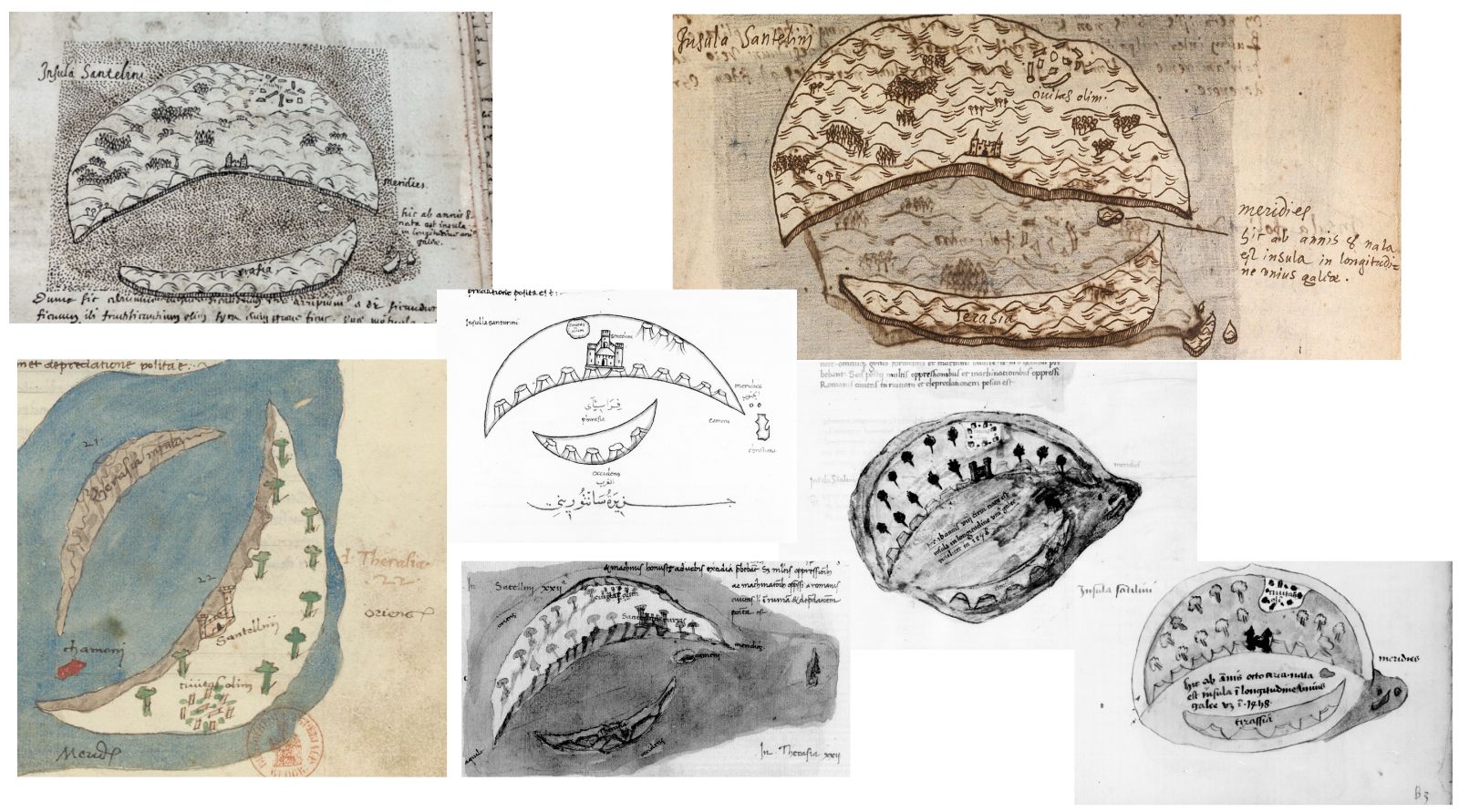Forschung
The Liber insularum Archipelagi by Cristoforo Buondelmonti
Beatrice Blümer

The island Santorini in different copies of the Liber insularum Archipelagi. London, British Library, Sloane 3843, fol. 15r, photograph by the author; Paris, BnF, Latin 9664, fol. 13r, in public domain; Paris, BnF, GE FF-9351, fol. 13r, in public domain; Paris, BnF, NAL 2383, fol. 12v, in public domain; Paris, BnF, Latin 4825, fol. 13r, in public domain; Paris, BnF, Latin 4824, fol. 16v, in public domain.
The interactions between text and image are at the heart of my Ph.D. project on the Liber insularum Archipelagi and its many copies. My research question concerns the individual decisions that went into shaping the narrative of the Renaissance Aegean Sea in text and image, the influence these treatises had on humanist concepts, and the reception of cartographic material among copyists and readers. In the corpus of the Liber insularum Archipelagi, the page layout changed according to its use, transforming the folio into a visual experience. Alongside the many changes made to the cartographic images between copies, the text was also modified in terms of the script (neat humanist handwriting or a less precise hand), the lettering (Gothic or humanist), and the abbreviations—for instance, to fully justify the text. Through these variations in script, colour, and detail, the contents of the book developed over time.
My dissertation argues that each version of the Liber insularum Archipelagi has aspects that are specific to the time and circumstances of production, but that all the different versions are related to some extent. I approach each manuscript as a window into the mind of a premodern artist setting out a specific view of the Aegean. Thus, each manuscript offers a subjective cultural, political, and social conception of the Mediterranean. Successive illuminators and scribes did not just present a view of the Aegean archipelago; instead, they revealed part of their habits and structures of thought with every formative decision they made in each manuscript. The copyists were influenced by multiple factors, such as their educational background or the reason for the copy being produced—whether patronage or otherwise—and this resulted in compositional diversity across the corpus of copies. For want of information about the copyists, intended clients, patrons, and place and time of production, I will focus on the source material itself rather than the people behind it in order to answer the question of how the manuscripts are linked.
As my Ph.D. project shows, the copyists of Buondelmonti’s work were by no means passive but held a position of power that allowed them to create and shape subjective narratives in which geographical accuracy was not the primary concern. By copying the Liber insularum Archipelagi, they captured the highly contested territory of the Aegean, at least on paper. Their different pictorial strategies were used to occupy the territorial space as they saw fit, and thus Buondelmonti’s isolario is significant for the history of map-making in terms of the power of maps to project subjective images of time and space.


